Let’s face it: most of us only own one bike which we use for everything.
It takes us on weekend adventures through the mountains and leisurely rides through a peaceful forest.
But, can you also ride your mountain bike through the city? Can your mountain bike take you to work or a friend’s house?
How can you set up your MTB for city biking?
Keep reading to find out!
Contents
Can You Ride a Mountain Bike on the Pavement?
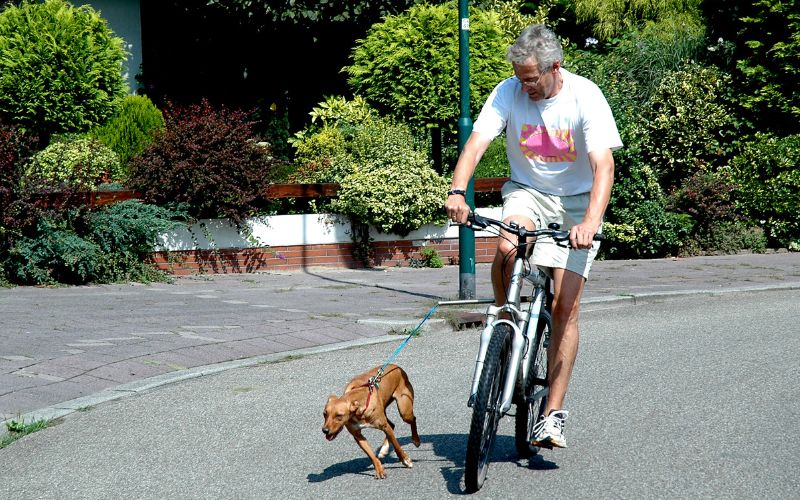
Yes, you can ride your mountain bike on the pavement.
Mountain bikes’ bodies and wheels are specifically crafted to seamlessly handle rocky and bumpy terrain. Still, it is possible to use them on a flat, hard, and smooth surface like a road.
Note, however, that your bike will not function the same way on the pavement as it does on rocky terrain.
You may find your tires are a bit too soft or that you need different pedals to keep your grip.
But as long as your bike and tires are in good condition, you’re ready to cycle anywhere your heart desires!
Is It Bad To Ride a Mountain Bike on the Pavement?
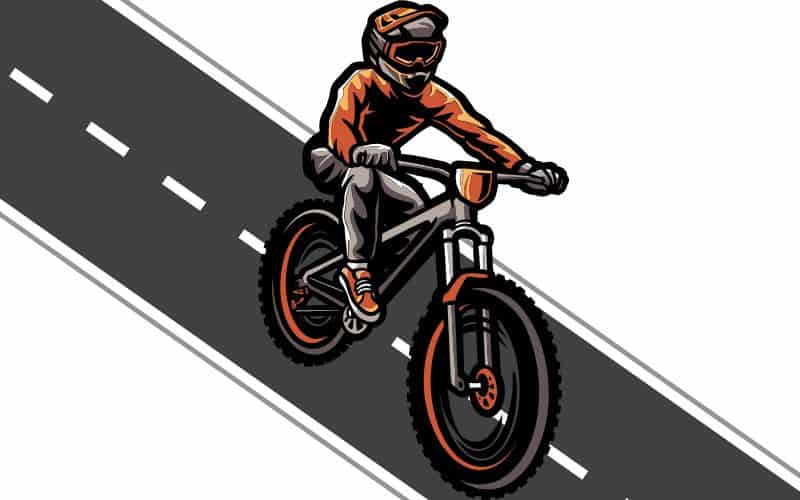
No, it’s not bad to ride a mountain bike on the pavement.
Mountain bikes are built like tanks. So, it’s very unlikely you’ll ruin your bike by taking it for a stroll through the city.
The one thing to consider is that mountain bikes’ tires are thicker than those of city bikes. They also feature vent spews meant to grip and traverse over sharp rocks.
This makes the tires more prone to friction, which can be very noticeable when riding a bike on pavement. In turn, you can expect your bike to be about 15% slower than city bikes on the pavement.
What’s the Average Speed You Should Ride a MTB on Pavement?
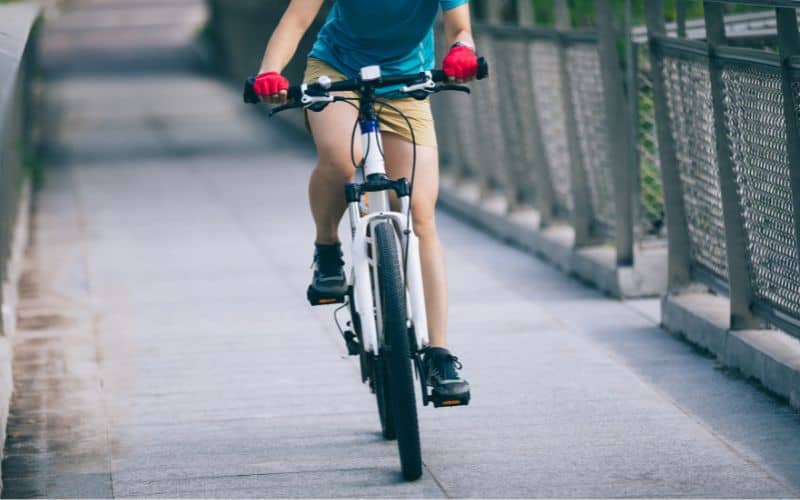
You should ride your mountain bike at an average speed of 17 mph on pavement.
Although mountain bikes are slower on pavement than road bikes, one upside is that the flat road allows them to go faster than they usually would on rocky terrain.
Most mountain bikes go 14 mph on mountain trails, but the city’s even roads allow them to go at an average speed of 17 mph.
Of course, this speed also depends on foot traffic, cars, and your desired route.
How To Set Up Your MTB for Biking on the Pavement?
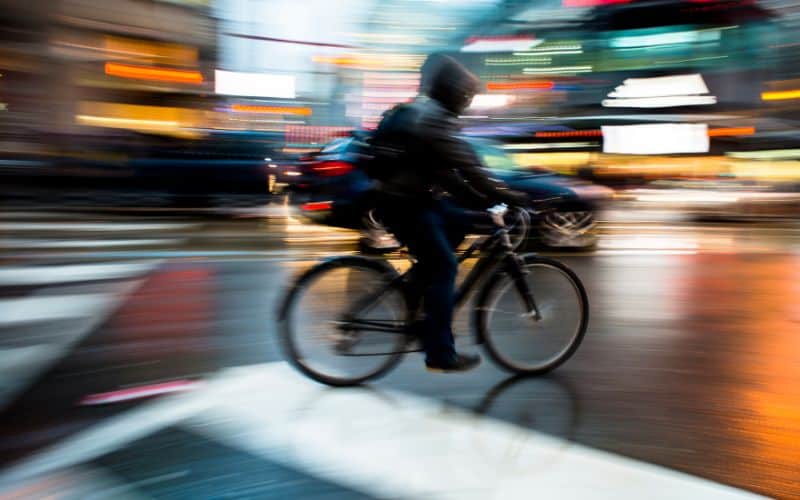
There are a few ways you can set up your MTB for biking on the pavement.
So, you’ve decided to take your mountain bike for a night out on the town?
Although you can ride your mountain bike on the pavement as is, there are steps you can take to have a smoother riding experience.
Let’s learn the things you can do to set up your MTB for biking on the pavement!
Safety First

City biking can be dangerous for inexperienced bikers.
So, it’s important to first consider your safety and take the proper precautions. You must ensure you and your bike are both visible to drivers to avoid any accidents.
This is especially important when biking at night and in areas with few street lights.
Consider putting some lights on your bike, one on the front and the other on the rear. There are several bike lights that can be recharged using a USB cable, so you don’t have to worry about replacing the batteries.
We like the Cycle Torch Shark 550R USB Rechargeable Bike Light Set since it comes with both a headlight and tail light, as well as a USB charging cord. It’s also waterproof so you don’t have to worry about a little rain leaving you in the dark.

We also suggest wearing reflective clothing, like the GoxRunx Reflective Vest Running Gear which comes with reflective armbands.
Increase Your Tires’ PSI
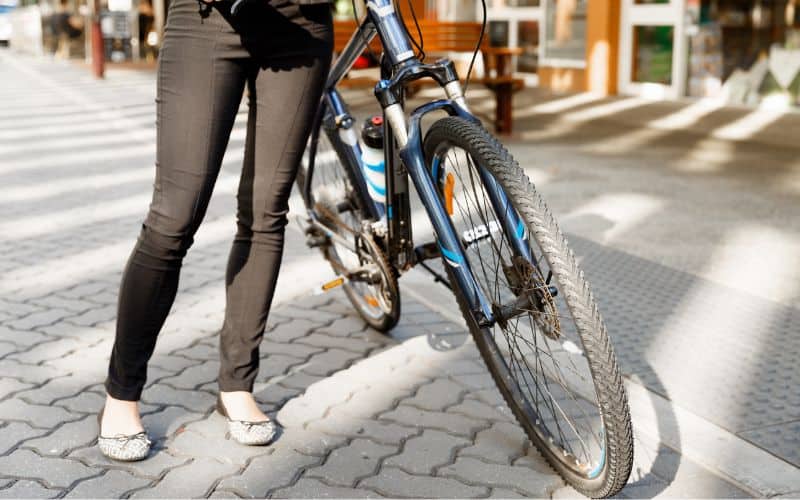
Mountain bike tires are softer and less pressurized so that they can glide over rocks, sticks, and pebbles without knocking the driver about.
However, city bikes require stiffer tires to glide over the smooth road and make harsh turns. A higher PSI also helps make the bike faster and preserve the tire rims.
So, it’s a good idea to increase your bike tires’ pressure, or PSI. You can do this by inflating the tires using a bike pump.
We recommend inflating them to a PSI of 50, though you can experiment with which PSI works best for you.
For instance, if you live in a city with cobblestone, you may want to opt for a slightly lower PSI so your wheels don’t hurtle over the bumpy road.
However, for cities with modern roads, a PSI of 50 will do just fine.
Invest in Clipless Pedals

Have your feet ever flown off the pedals while cycling down the road?
Clipless pedals are a great way to ensure your feet stay exactly where they should, even when quickly cycling and turning in the city. The small bolt-like extenders grip your shoe in place, even if you’re wearing regular sneakers or boots.
Many new clipless pedal models, such as SHIMANO PD-EH500 Urban Riding & Cycle Touring Double Sided Bike Pedal , feature a “light release” design, so you can easily remove your foot from the pedal when desired.
This allows you to ride faster, but still stay in control of your bike and its speed.
Invest in a Chainstay Protector

One downside of city-biking is that your bike’s chain can rub or hit your bike frame. This can damage your bike’s frame and, in some cases, the chain.
Not to mention, it makes a pretty annoying sound. To prevent this, you can use a chainstay protector.
A chainstay protector is a strip of durable and slightly padded tape that can be added to your bike’s frame. It will absorb the sound of your chain hitting the bike, as well as prevent both of them from being scratched.
Although there are many pre-cut chainstay protectors on the market, we prefer chainstay rolls. This allows you to cut strips that exactly fit your bike model.
We like the WilderWild Bike Frame Protection Tape since it comes with customizable stencils and is heat activated to ensure the tape doesn’t peel off your bike.
It also comes in several different designs so you can personalize your bike to your taste!
Simply cut a piece of the chainstay protector, adhere it to your bike frame, and use a heat gun or hair dryer to “melt” it into place.
Allow the tape to cool, and you’re all set. That chainstay protector isn’t going to budge, no matter how fast or rigorously you cycle!
GMBN Tech has a great video explaining how you can set up your bike for urban riding. Watch it below!
Wrapping Things Up
You love your mountain bike, so why not ride it around the city?
You may have to adjust a few parts of your bike to achieve an optimal riding experience, but most of these changes are easy to make.
Don’t forget to increase your bike tire’s PSI, and get some clipless pedals and chainstay protectors.
Above all, be safe! Riding in the city is risky business, so it’s crucial you ensure drivers can see you, especially at night.
What’s your experience riding a mountain bike on the pavement? Let us know in the comments below!
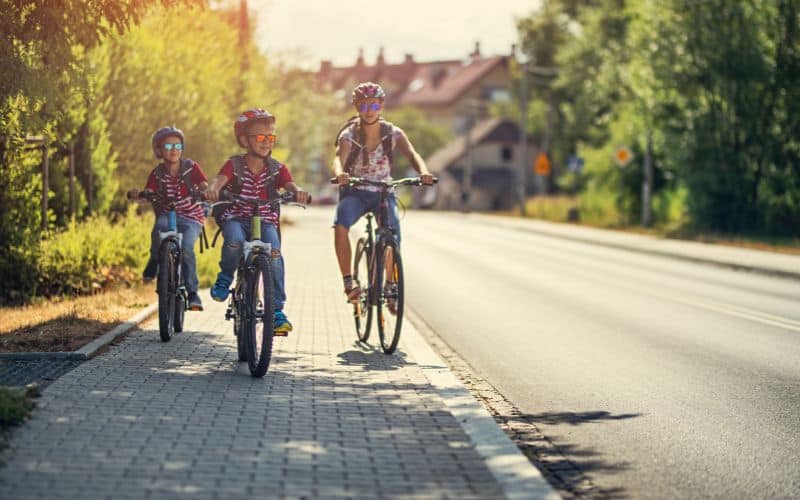
Name Name
Monday 13th of May 2024
This is wrong advice. The punishment for riding a bike on the pavement is an immediate £30 fixed penalty notice fine charged under Schedule 3 and Section 51 of the Road Traffic Offenders Act 1988.
Typically speaking, only a very small percentage of cyclists in the UK receive a fine for cycling on the pavement. When the majority of police officers observe a cyclist violating the law they will inform them verbally that they are infringing the law and should stop using the pavement.